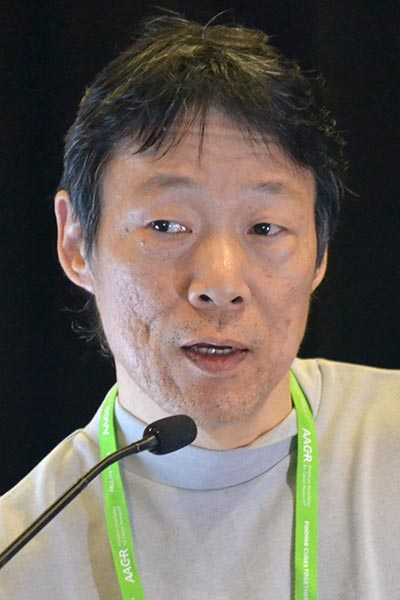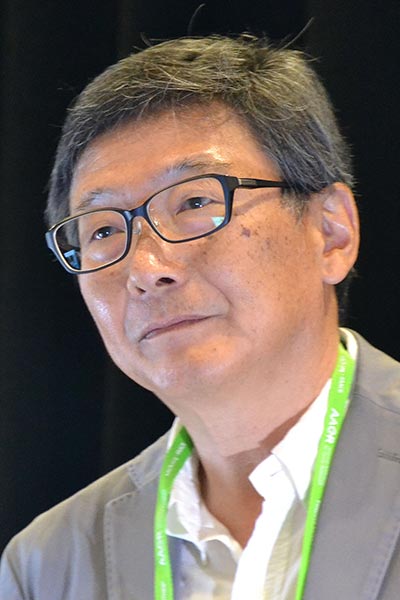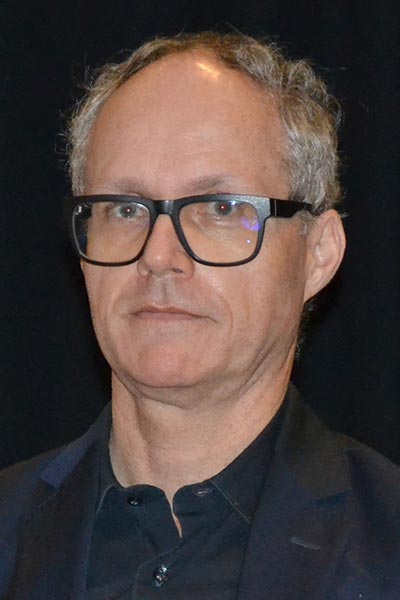Senescence appears to drive tumor progression, recurrence
//
Estimated Read Time:
Cellular senescence — a state of permanent cell growth arrest caused by various genotoxic and epigenomic stresses that induce carcinogenesis — is a double-edged sword for cancer.
On one hand, loss of proliferative capacity of senescent cells appears to prevent the accumulation of genomic and epigenomic aberrant cells, thus acting as a barrier to tumorigenesis. On the other hand, senescent cells secrete a variety of inflammatory cytokines and form chronic microinflammation in the surrounding microenvironment, promoting carcinogenesis, malignancy, resistance to tumor immunity, and metastasis.

“Senescence is a spectrum of plasticity from the normal cell state to the senescent state,” explained Masashi Narita, MD, PhD, Professor of Senobiology at the University of Cambridge, United Kingdom. “Senescence can be determined by fate or it can be induced by the activity of oncogenes, by age and accumulated stress, and by cancer treatment. Senescence results in gain-of-function via the deregulation of lineage-specific genes and pathways that can increase cellular plasticity and promote the development of cancer.”
Narita was the first of three researchers to discuss the relationship between cellular senescence and cancer in the educational session Senescence in the Driver’s Seat: Manipulating the Host Immune Response to Cancer on Saturday, April 15. The session can be viewed on the virtual meeting platform by registered Annual Meeting participants through July 19, 2023.
Recent work in both animal models and human tumors has shown a spectrum of RAS-induced senescence, Narita said. Higher RAS exposure results in increased cellular plasticity and increased development of cancer.
Cells with high RAS levels are more likely to be eliminated by the host immune system, Narita explained. But cells with mid- and low-level RAS increases may escape immune surveillance and trigger tumorigenic activity, he added.

In addition to its effects on cancer cells, senescence also affects multiple stromal cells associated with cancer, said Makoto Nakanishi, MD, PhD, Professor of Cancer Cell Biology at the Institute of Medical Science, University of Tokyo, Japan. Senescent stromal cells contribute to cancer promotion and progression, he added.
Tumor-associated macrophages (TAMs) help prepare sites for tumor cells to grow and proliferate. TAMs also promote tumor invasion, vascularization, intravasation, and extravasation, and promote the survival of circulating tumor cells, Nakanishi explained.
Tumor endothelial cells (TEC) regulate cancer immune sensitivity by suppressing immune cell activities. Cancer-associated fibroblasts (CAF) promote cancer by sustaining proliferative signaling and evading growth suppressor stimuli, activating invasion and metastasis, inducing angiogenesis, avoiding immune destruction, deregulating cellular energetics, and resisting cell death, Nakanishi explained.
“Little was known about senescent cells in vivo,” he said. “We had to develop technology to label senescent cells in vivo to determine the origin of senescent cells, the stimuli that induce senescence, and the properties of senescent cells.”
The cell cycle inhibitor p16 has emerged as an in vivo marker of cellular senescence. A pancreatic cancer allograft model generated by Nakanishi’s team allowed for the analysis of in vivo senescent cells and the identification of two cancer clones with distinct immune sensitivities: C2 cells exhibited immune resistance while C4 cells were immune sensitive. C2 tumors had a higher population of senescent stromal cells with high P16 expression than C4 tumors.
Senescent TAMs suppress cancer immunity; senescent TECs promote angiogenesis and metastasis; and senescent CAFs promote cancer fibrosis. Eliminating p16high stromal cells suppressed both cancer fibrosis and cancer progression in mouse models.

“Cellular senescence is at the heart of tissue integrity and tissue homeostasis,” said Clemens A. Schmitt, MD, PhD, Director of Hematology/Oncology at the Johannes Kepler University Medical Center, Linz, Austria. “In wound healing, tissue injury leads to proliferation, senescence, immune clearance, plasticity with stem-like reprogramming, and reentry into the cell cycle. That same pattern plasticity can lead to cancer.”
Cellular senescence can persist through cancer treatment, Schmitt added. Senescent cells that survive treatment can exhibit stem-like plasticity that help give rise to treatment-resistant clones. Clones that evade immune surveillance can contribute to recurrent disease.
Targeting this persister biology through the removal of senescent cells (senolysis) in minimal residual disease can reduce recurrence by evoking adaptive T-cell immunity and suppressing it via PD-L1 and PD-L2 checkpoint inhibitor blocking agents, Schmitt said.




